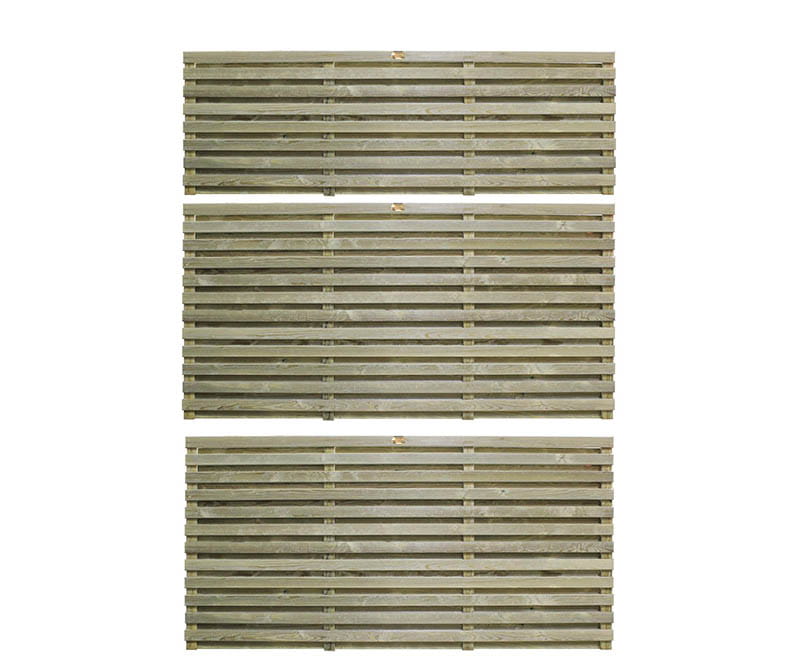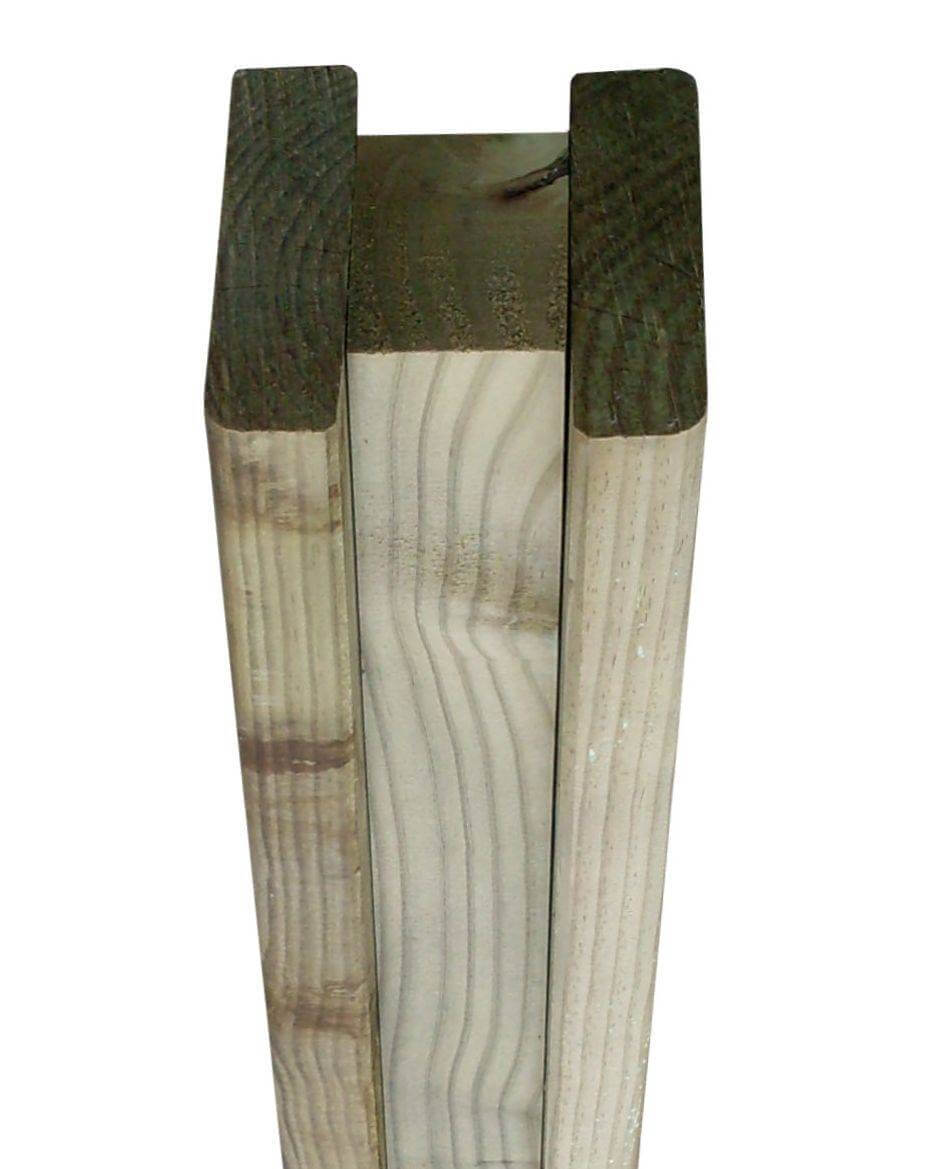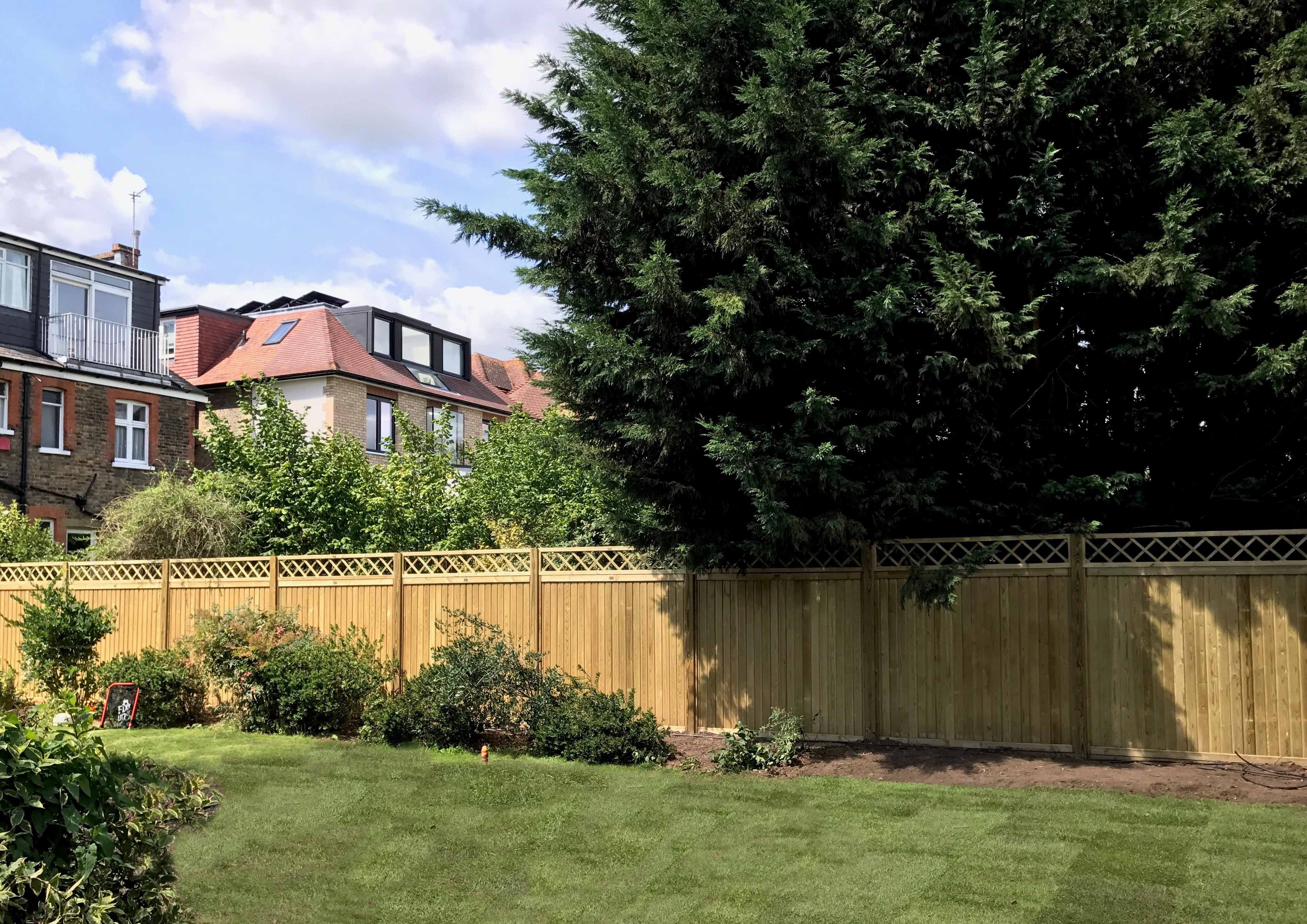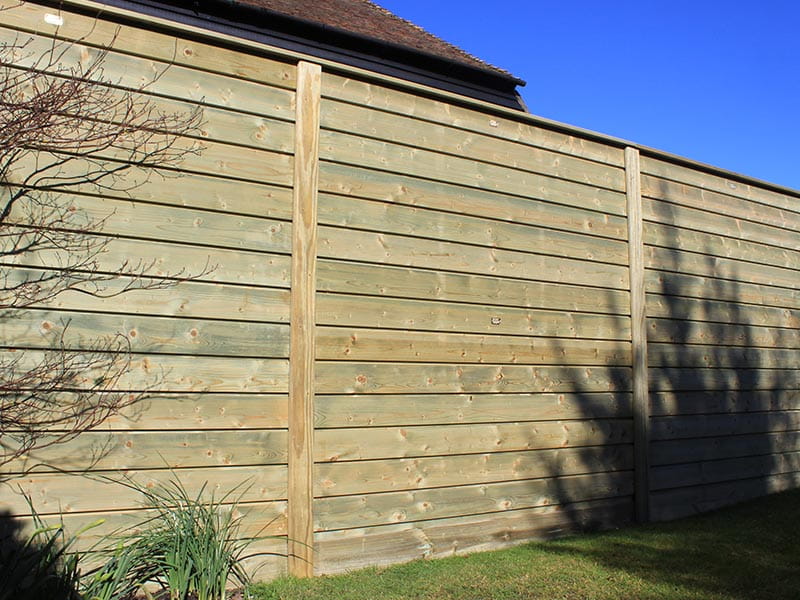23/08/2021 11:14 AM
Privacy is sometimes the most important consideration in a garden. Timber fence panels can offer high levels of privacy, but the standard timber fence panel height is often 6ft high.
7ft Fence Panels and above
One of our most popular fence panels can be used to achieve a taller fence, we’ve created some combinations below so you can compare the heights and tailor you fence to what you desire.
Due to the weight of Venetian Hit and Miss we supply it in smaller sections to be combined on site.
To create a 8.39ft fence you will need: 2 x 0.907m + 1 x 0.607m + 140mm gravel board = 2.56m high fence

Our Shadowline fence panel is similar to Venetian Hit and Miss as it is stacked to achieve the height required.
To create a 7ft fence you will need:
3 x 0.66m + 140mm gravel board = 2.1m/ 7ft high fence
Other higher combinations are also possible
1 x 0.91m + 2x 0.66m + 140mm gravel board = 2.37m / almost an 8ft high fence
What posts are required for a 7ft fence or above?
We supply heavy duty fence posts that work in exactly the same way as our standard slotted Jakposts but are larger, heavier and longer.
Posts required for some example fence heights:
View our heavy duty slotted fence posts in more detail here

Are there any other alternatives to achieve a fence over 2m high?
Yes, choosing acoustic fencing not only reduces noise pollution but is also available in heights above the standard 6ft. The fence is made up of inter-locking timber boards that eliminate the gaps sound waves travel through, and common standard heights are 1.8m, 2m and 2.5m. With a natural timber appearance, it looks like a more robust version of our tongue and groove fencing, and with no horizontal rails, it’s extremely hard to climb, so it’s extra secure.
Adding a trellis or fence panel topper
Adding a trellis or fence panel topper to a standard 1.83m fence panel can be used to make a fence panel over 7ft high.
Our slotted fence posts are designed to work with our fencing and trellis panels. By using a slotted fence post the trellis panel can slot on top of the fence panel and be secured into place.
Using a heavy slotted post, a 6ft fence panel with a 0.56m high trellis panel on top would give 2.42m (7.8ft fence)
While trellis is a great addition to any fence, it should be taken into account that trellis is also included in the 1.8/2m rule for max fencing height before planning permission is needed.

Why? This is originally down to the fact most panels were sold in imperial measurements from three to six foot. A 7ft panel would be over the standard planning regulations of 6.6 feet and not very popular for this reason. Also, a panel that is 7ft or above can be a pain to transport and handle, and is prone to damage.

A six foot panel (1.83m) is still our most popular height, but because we require a gravel board to be installed when a panel is in contact with the ground this actually makes our most popular height of fence to be around 1.97m or just under 6.6ft. This is still within the height restriction without planning permission, and the addition of the gravel board protects the fence panel from the ground, and the extra height increases privacy.
Due to an increasing requirement for privacy over the years, there has been more of a demand for a fence that is over two metres high. The most important aspect of planning for a fence over two metres high is the requirement for planning permission. Any fence or wall over 2 metres or 6.6ft high needs planning permission. It is also important to note that this maximum height before planning permission can in some instances be 1.8m, due to regulations/permissions of some parish councils, conservation areas and local authorities, which in turn can be even lower on certain boundaries. Front garden fencing height limits are much lower than side or rear fencing. You need planning permission if fencing is going above 1 metre.
This is the key reason that manufacturers and fencing companies in the UK do not sell panels over two metres, but this doesn’t mean that it is not possible to achieve a fence over two metres high. The following external blog goes into more detail on fences over 2m. Please note, the comments in this blog are not the views of Jacksons Fencing
When considering the height of a new fence care must be taken as factors such as sloping ground and the need to step panels can result in a higher fence in places, which can cause issues with planning permission being required.
We recommend that the first course of action before installing any fence is to check what heights are allowed on each boundary and start drawing up plans from there.
Other options for a 7ft or 8ft fence
The only way to get around planning permission and gain a boundary that is over two metres is to plants or trees grow above your fencing. Using fencing to trail climbing plants up and over, or planting hedging offers the green alternative to getting the boundary line over 6ft. But there are limitations. If you are thinking about using climbing plants, in winter the coverage won’t be as full, and you do need to prune regularly to ensure ‘in ground’ conditions aren’t created across the whole height of the panel, as this could affect the 25-year guarantee we offer.
Hedges also require a lot of maintenance to keep them looking in top shape. Plus, they do take up space within your garden, a lot more than a fence would. It is also recommended to double check with a local authority as some areas will restrict the height of a hedge, for example if it obstructs a driver's line of sight.
To view the products found in this blog, please click the buttons below: